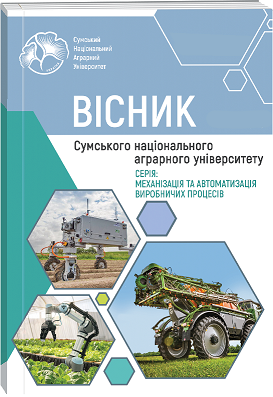MANUFACTURING TECHNOLOGY OF ROLLING ROLLS
Abstract
The main conditions determining the type of billet in the manufacture of large-sized shafts are the size and shape of the shaft, the purpose of the shaft in the machine, the seriality of production and the efficiency of the technological process of manufacturing blanks. Large shafts, worms, rolling rolls, rotors, as a rule, work in stressful conditions and are the most heavily loaded parts. For the production of large shafts, carbon and high-strength alloy steels are used, as well as modified high-strength cast iron. The main method of manufacturing blanks of large shafts in conditions of single and small-scale production is free forging. The quality of forgings made of carbon and alloy steels is regulated by standards. In order to increase the strength of the ingot shafts, they are pre-forged, that achieves a favorable location of the fibers in the work piece and the possibility of changing the mechanical properties ((Mekhanichna obrobka velikogabaritnikh detalei zi znosostiykimi naplavochnimi materialami. (2015)). For rolls of cold and hot rolled products, blumings and gear cages on the basis of a typical multistage shaft, a typical technological process of manufacturing and processing of the work piece has been developed and applied. In the manufacture of blanks of large shafts, modified high-strength cast iron with globular graphite is widely used (Pukhovskiy E.S. (2021)). The use of high-strength cast iron instead of the usual one during the production of rolling rolls increases their stability by 1.5…2 times. Currently, up to 70% of rolling rolls are made of high-strength cast iron and only 25…30% – of bleached gray. The use of high-strength cast iron makes it possible to successfully replace steel in the manufacture of rolls of rolling mills and other similar parts. Rolls of rolling mills in comparison with other parts work in adverse conditions, as they perceive large alternating bending forces and thermal loads. The surface of the roll working when rolling metal for abrasion must have high hardness and wear resistance, that is, the material of the rolls must be both viscous in the core and sufficiently the working surface of the barrel (at least 90 units according to Shore), and the depth of the hardened layer must be at least 3% of the value of the roll radius. The hardness of the necks of the rolls should be within 30…55 units. by Shore. On the working surfaces of the rolls, cracks, breaks, chips, non-metallic inclusions and other defects that can lead to a decrease in the quality of products are not allowed. Rolls for cold rolling are made mainly forged from high carbon alloy steels of grades 9X, 9X2, 9X2G, 9X2MF, 9XF, etc. Forgings of cold-rolling rolls are made by free forging on hydraulic presses; as blanks use large ingots weighing 40…90 tons, before finally obtaining the work piece, the ingot roll or part of it is pre-forged (Dobrianskiy S.S., Malafeev U.M., Pukhovskiy E.S. (2015)). The main purpose of forging is to ensure the operation of the cast structure of the ingot metal, the complete destruction of the carbide mesh and the grinding of grain, the achievement of the most favorable location of the fibers in the forging and obtaining the necessary mechanical properties of the metal in the transverse, longitudinal directions and forging section. Of the two existing forging schemes: “circle – circle” and “circle – square – circle” the latter is preferable, since it is used to obtain a better forging metal structure, better elaboration of the core layers and brewing of the macro- and micro porousness of the metal, determined by its metallurgical properties, is achieved. Forgings of large rolls weighing more than 3 tons should be made with two draft ingots. The correct choice of the degree of deformation during the draft of ingots improves the quality of forgings and increases the strength and wear resistance of the rolls. (Sisa O.F., Bokov V.M. (2009)). The choice of blanks for rolls of cold and hot rolling is largely influenced by the technology of their machining. Therefore, it is extremely important to design individual technological processes for processing rolling rolls, which determines the quality indicators that affect their performance characteristics. Purpose of work: improving the performance of rolls of cold and hot rolling through the development of technology for obtaining the workpiece, its heat treatment and subsequent machining with the provision of quality indicators.
References
2. Bagatotziliovi verstati Mazak INTEGREX e-670H-S (2019), [Multi-purpose mashine Mazak e-670], – URL: https://www.mazakusa.com/machines/integres. (in Ukranian).
3. Beshta O.S., Balakhontzev O.V., Borodai V.A. (2010). Avtomatizovaniy elektroprivid u prokatnomu virobnitztvi [Automated electric drive in rolled production]. Dnipro, Minvuz Ukraini, 224 s. (in Ukranian).
4. Dobrianskiy S.S., Malafeev U.M., Pukhovskiy E.S. (2015). Proektuvannia i virobnitzhtvo zagotovok. [ Design and production of blanks]. K., NTUU(KPI), 354 s. (in Ukranian).
5. Mekhanichna obrobka velikogabaritnikh detalei zi znosostiykimi naplavochnimi materialami. (2015). [Mechanical processing of large parts with wear-resistant surfacing materisls], (Elektronni resurs), – Monographia, / Novikov F.V., Andilakhai V.O., Ivanov I.Y. i dr. – Kharkiv, KHNEU. -132 s. (in Ukranian).
6. Mironenko E.V. (2017) Analiz mozhlivostei vikoristannia riztziv z tverdosplavnimirizalnimi plastinami pri obrobtzi valkiv prokatnikh staniv. [Analysis of the possibilities of using cutters with carbide plates in the processing of rolls of rolling mills]. /Zbirnik naukovikh pratz. Kharkiv, s. 116 – 125. (in Ukranian).
7. Pukhovskiy E.S. (2021), Progresivni prozesi obrobki materialiv. [Progressive processes of material processing], (Elektronni resurs), K., NTUU (KPI) im. I Sikorskogo, – 132 s. (in Ukranian).
8. Sisa O.F., Bokov V.M. (2009). Rozmirna obrobka tverdosplavnikh prokatnikh valkiv bipoliarnim instrumentom. [Dimensional processing of carbide rolling rolls with a bipolar tool]. / Progresivni tekhnologii I sistemi mashinobuduvannia., vip. 2, s. 209 – 213./ (in Ukranian).
9. Mazin F., Bhaskaran G., Sabin V., (2023), Determination of cost-effective range in surface finish for single pass turning. DOI: 101504/UMR.2023.10052034.
10. Olt J., Krasny V., Maksarov V., (2019), Study of bearing units wear resistance of engines career dump trucks, working in freeting corrosion conditions. Journal of mining Institut, 235 (1), p.70-77.

 ISSN
ISSN  ISSN
ISSN 



